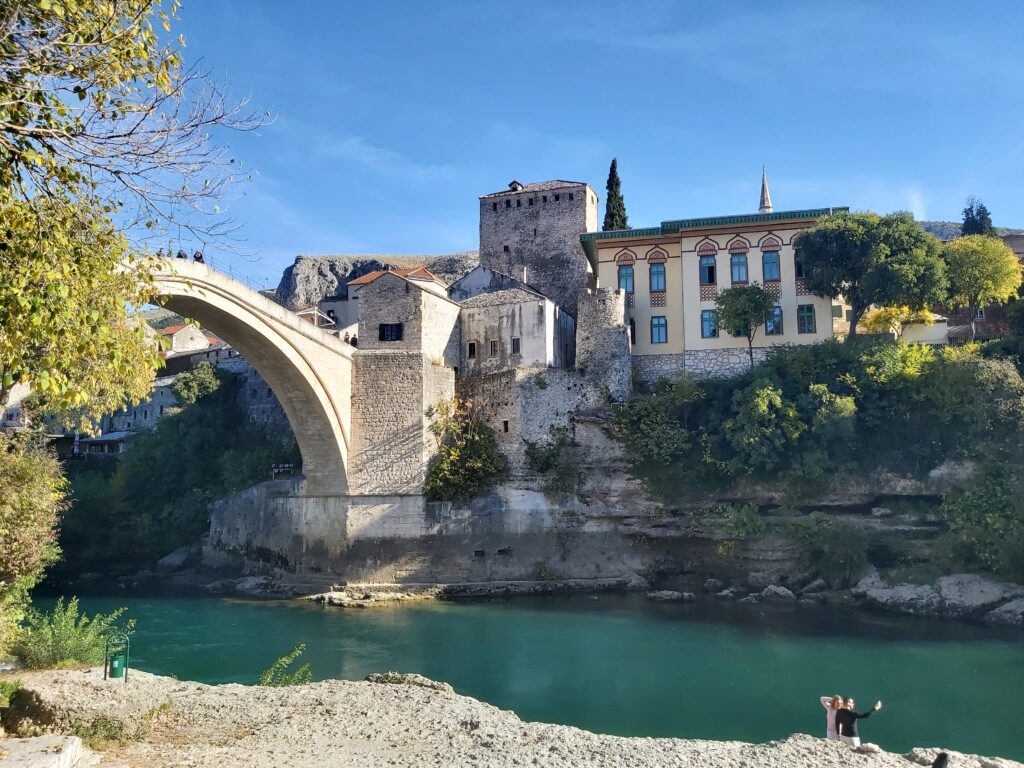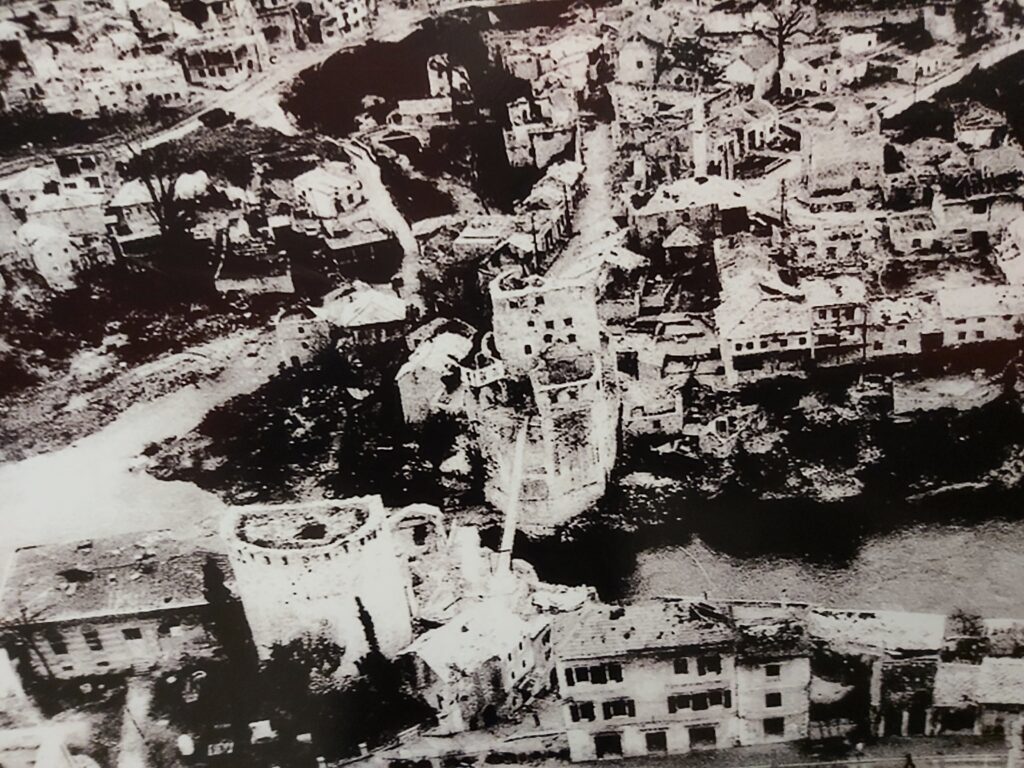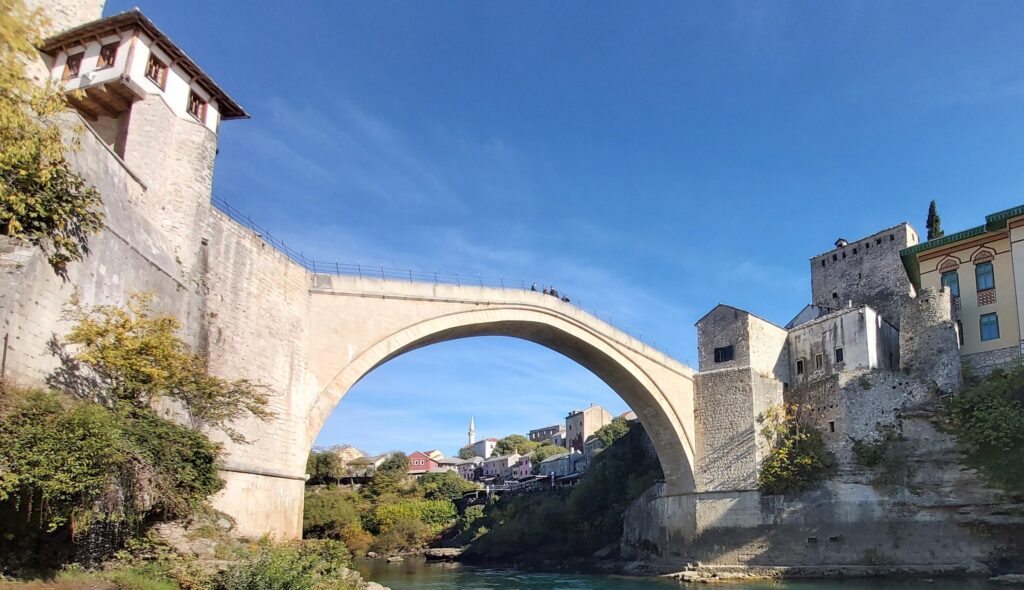
On the bus from Kotor, Montenegro, to Mostar, Bosnia and Herzegovina, I noticed that the mountains changed from the steep, rugged, jagged mountains to steep, sculptural, smooth mountains. Valleys also became wider and better suited to agriculture.
I also noticed buildings in disrepair and even ruins. Montenegro was memorable for well-maintained buildings. At the time I wondered if they were all newer structures for part-time residents. But I don’t think they were. They had tell-tale signs of everyday life: potted plants and drying laundry. Maybe they were built for a rapidly expanding population? In B&H, however, I noticed old stone or concrete structures left to decay. I noticed new homes left half finished. The outside half. I noticed construction seemingly abandoned. I also saw building bearing scars of war. Were the scars left as memorials or just didn’t get around to it yet?
Don’t misunderstand. B&H has plenty of beautiful homes. Plenty of restorations. Plenty of new construction. It just has more decay, if that’s the right word, than Montenegro.

Mostar is a medieval town sitting on the confluence of two rivers. The Neretva, by far the larger of the two, sits in a steep canyon and can only be crossed by one of the bridges. The most famous of the bridges, called the Old Bridge, is a 16th century Ottoman style, stone arch that replaced an older wooden bridge. The bridge spans 100 feet, and reached a height of about 80 feet above the Neretva river. The river here is deep and fast moving. In fact, it’s deep enough that you can dive off the bridge. And people do. It’s some kind of test of manhood, where 16-year-old boys dive off the bridge and immerge as men, wet men, but men nonetheless. I’m not judging. They’ve been doing for nearly 400 years, so it must work.

The Radobolja (‘j’ makes a ‘y’ sound) is a much smaller river, but is fast flowing and tumbles down its own steep canyon making a lot of noise. Today, the banks of the small but fast flowing Radobolja is lined with restaurant patios. I imagined that the earliest buildings sat next to the water, then buildings began to terrace their way up the cliff until they reached to the top.
I was looking at photos taken of the destruction caused by the war, 1992-1995, and didn’t see a lot of evidence for the restaurants that are there now. Clearly, they are post-war, but the patios are a nice place to eat, cut off from the world by the sound of the Radobolja. And no sign of battle damage.
Speaking of battle damage… what a mess. The film and photos one of Mostar’s museums are bleak! Everything blown up, shot up, and otherwise knocked down. Rubble filled the streets. In 1993, the Croat Defense Council destroyed the Old Bridge along with most of the old town. It wasn’t an accident; the bridge was deliberately targeted. They even filmed its destruction. The bridge was, of course, rebuilt after the war with help from several countries and European organizations. But still, signs of the 30-year-old war remain all around Mostar: buildings in ruins, with bullet marks, rocket holes, and fire stains.

